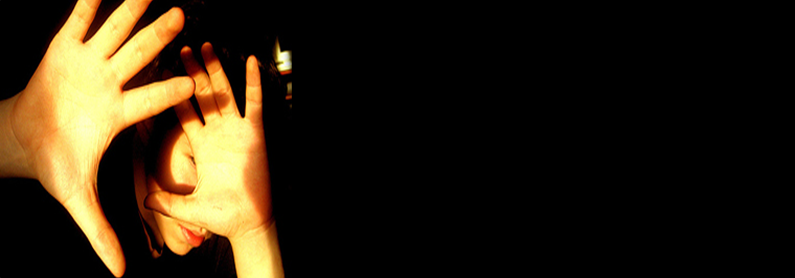Light Sensitivity

Date: January 13, 2010
Source: Beth Israel Deaconess Medical Center
Summary: Scientists have identified a new visual pathway that underlies sensitivity to light during migraine in both blind individuals and in individuals with normal eyesight.
Ask anyone who suffers from migraine headaches what they do when they’re having an attack, and you’re likely to hear “go into a dark room.” And although it’s long been known that light makes migraines worse, the reason why has been unclear. Now scientists at Beth Israel Deaconess Medical Center (BIDMC) have identified a new visual pathway that underlies sensitivity to light during migraine in both blind individuals and in individuals with normal eyesight. The findings, which appear January 10 in the advance online issue of Nature Neuroscience, help explain the mechanism behind this widespread condition.
A one-sided, throbbing headache associated with a number of symptoms, including nausea, vomiting, and fatigue, migraines are notoriously debilitating and surprisingly widespread, affecting more than 30 million individuals in the U.S. alone. Migraine pain is believed to develop when the meninges, the system of membranes surrounding the brain and central nervous system, becomes irritated, which stimulates pain receptors and triggers a series of events that lead to the prolonged activation of groups of sensory neurons.
“This explains the throbbing headache and accompanying scalp and neck-muscle tenderness experienced by many migraine patients,” explains the study’s senior author Rami Burstein, PhD, Professor of Anesthesia and Critical Care Medicine at BIDMC and Harvard Medical School.
In addition, for reasons that were unknown, nearly 85 percent of migraine patients are also extremely sensitive to light, a condition known as photophobia.
“Migraine patients may wear sunglasses, even at night,” he notes, adding that the dimmest of light can make migraine pain worse. Extremely disabling, photophobia prevents patients from such routine activities as reading, writing, working or driving.
It was the observation that even blind individuals who suffer from migraines were experiencing photophobia that led Burstein and first author Rodrigo Noseda, PhD, to hypothesize that signals transmitted from the retina via the optic nerve were somehow triggering the intensification of pain.
The investigators studied two groups of blind individuals who suffer migraine headaches. Patients in the first group were totally blind due to eye diseases such as retinal cancer and glaucoma; they were unable to see images or to sense light and therefore could not maintain normal sleep-wake cycles. Patients in the second group were legally blind due to retinal degenerative diseases such as retinitis pigmentosa; although they were unable to perceive images, they could detect the presence of light and maintain normal sleep-wake cycles.
“While the patients in the first group did not experience any worsening of their headaches from light exposure, the patients in the second group clearly described intensified pain when they were exposed to light, in particular blue or gray wavelengths,” explains Burstein. “This suggested to us that the mechanism of photophobia must involve the optic nerve, because in totally blind individuals, the optic nerve does not carry light signals to the brain.
“We also suspected that a group of recently discovered retinal cells containing melanopsin photoreceptors [which help control biological functions including sleep and wakefulness] is critically involved in this process, because these are the only functioning light receptors left among patients who are legally blind.”
The scientists took these ideas to the laboratory, where they performed a series of experiments in an animal model of migraine. After injecting dyes into the eye, they traced the path of the melanopsin retinal cells through the optic nerve to the brain, where they found a group of neurons that become electrically active during migraine.
“When small electrodes were inserted into these ‘migraine neurons,’ we discovered that light was triggering a flow of electrical signals that was converging on these very cells,” says Burstein. “This increased their activity within seconds.”
And even when the light was removed, he notes, these neurons remained activated. “This helps explain why patients say that their headache intensifies within seconds after exposure to light, and improves 20 to 30 minutes after being in the dark.”
The discovery of this pathway provides scientists with a new avenue to follow in working to address the problem of photophobia.
“Clinically, this research sets the stage for identifying ways to block the pathway so that migraine patients can endure light without pain,” adds Burstein.
In addition to Noseda and Burstein, coauthors include BIDMC investigators Vanessa Kainz, Moshe Jakubowski, Joshua Gooley, and Clifford B. Saper; and Kathleen Digre of the University of Utah.
This study was funded by grants from the National Institutes of Health and from the Research to Prevent Blindness.
Story Source: The above story is based on materials provided by Beth Israel Deaconess Medical Center.
